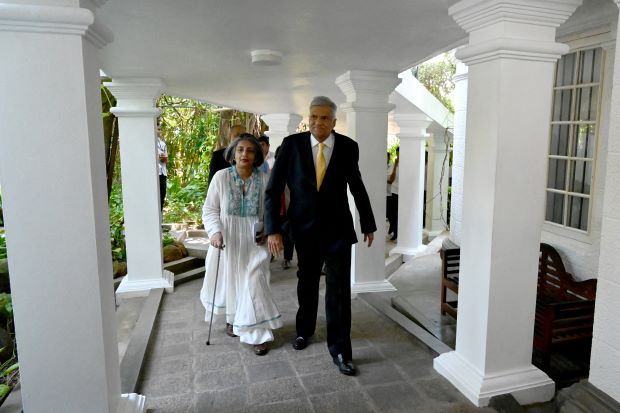Prime Minister takes over as protests grow in Sri Lanka

By Skandha Gunasekara and Mujib Mashal
COLOMBO — Sri Lanka plunged deeper into crisis on Wednesday (13) as the prime minister took over and protesters lost patience with a political leadership that was not bending to their demands.
There was no clear sign of who was in charge for hours on Wednesday after President Gotabaya Rajapaksa fled the country, instead of resigning. With the uncertainty over who led the country, protesters surrounded the prime minister’s residence, where they were met with tear gas in the capital, Colombo.
The appointment of Prime Minister Ranil Wickremesinghe is unlikely to satisfy the demands of protesters calling for a wholesale change of the political leadership, whom they blame for nearly running the country into bankruptcy. The movement against Rajapaksa and his allies has been building for months as fuel, food and other basics have dwindled and become more expensive.
Protesters did not back down after Wickremesinghe was named acting president. The crowd outside his office swelled. They broke through and took over the building; another group took over the state broadcaster.
In his first address as acting president, Wickremesinghe declared a state of emergency and said the order would give security forces sweeping powers to detain anyone who violates a nationwide, 24-hour curfew. The speech was broadcast on television.
Wickremesinghe, who has not been seen in public since the weekend protests, called some of the protesters a “fascist threat”.
The fuel shortage has upended daily life in Sri Lanka for months, with the country essentially out of foreign-currency reserves necessary to buy essential imports. The prices of food and medicine have soared, power cuts have become the norm, and public transportation is often suspended to shore up fuel supplies.
Whoever runs the country for the next few months inherits a nation that will be difficult to stabilize. They will need to earn the trust of protesters and convince lenders — including steadfast allies like India — that they can dig the nation out of its economic hole.
The transition to a new government will put the spotlight on a Parliament that has long frustrated the island nation of 22 million, with lawmakers and political parties engaging in protracted and messy fights over positions of power. Complicating matters, the ruling party loyal to the Rajapaksas still maintains a majority of the seats.
Sri Lanka’s Constitution is clear on succession. In the event that a president resigns, the prime minister takes on his duties in an interim capacity. The proceedings then turn to Parliament, where lawmakers vote for a new president from their midst to complete the term. Rajapaksa’s term had two years to go.
-New York Times

